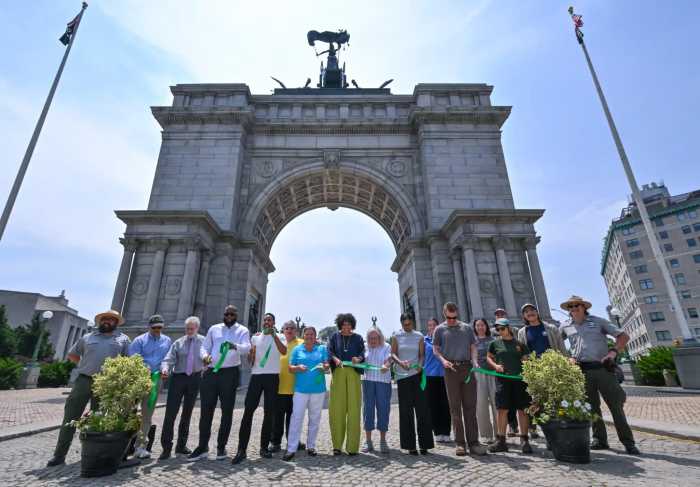Green-Wood Cemetery, Brooklyn’s largest burial ground, is officially on the hunt for its newest in-house artist, with applications for the 2024-2025 Artist-in-Residence Program open through Jan. 31, 2024.
Once the deadline has passed, the cemetery’s education and public programs department will select one visual or performance artist who, for nine months, will provide Green-Wood with a body of work meant to evoke the natural and storied beauty of the historic green space — one of the first rural cemeteries founded in the US in 1838.
“Around 15 to 20 years ago our president of the cemetery really wanted to make sure that Green-Wood was this space that was not only welcoming, but then also engaging to visitors,” Harry Weil, Green-Wood Cemetery’s director of education and public programming told Brooklyn Paper on Wednesday. “Then when I came in about eight years ago, the goal was really to expand that a bit more and to really think about things like dance and visual art and music and ways that those [art forms] can be incorporated into the space.”
The residency program first started in 2021 as a means to connect the historic space with the arts, but also to support the borough’s creative community amid the ongoing COVID-19 pandemic.
“Personally, seeing a lot of friends and people I knew who were artists who were getting kicked out of their studio spaces, no longer able to perform because concerts were being canceled,” Weil said. “So the residency was a way for us to extend to the artistic community; it was one of our ways of wanting to support the community.”
The residency program — open to up-and-coming as well as mid-career artists in the New York City area — provides the selected creator with a studio space, an $8,000 honorarium as well as crucial access to the Green-Wood grounds and its expert staff.
“Cemeteries are spaces that many people don’t encounter [often] and many people don’t know how a cemetery functions and maybe never will until they have a loss and they actually have to use a cemetery to bury a loved one in some way,” said Weil. “So being able to come in and talk to our director of preservation or our director of horticulture about the trees on the grounds and which ones are they choosing and how they’re pruned and the climate change initiatives that we are trying here. Artists can benefit from their expertise and hopefully in some way it informs their work.”
This year marks the fourth artist residency program hosted by Green-Wood, winners of which are determined by an initial review of applicants by cemetery bigwigs. Following that review, applicants are then judged by an external panel of esteemed members of the arts community including Gabriela López Dena, associate curator of public practice at the Public Art Fund, Elena Ketelsen González, assistant curator of MoMA PS1 and Rachel Vera Steinberg, curator and director of exhibitions at Smack Mellon.

One could argue that cemeteries are inherently artistic locations, often serving as a loving memorial to departed loved ones. But, Green-Wood goes a step further, and Weil says that’s because art is as significant in life as it is in death.
“When you’re here, you can’t get away from the fact that you’re in a cemetery,” Weil said. “And we aren’t trying to disguise that fact with any of the programming we do. So how can the productions that we bring to Green-Wood, the visual and performing art that we bring, how can they sort of be in conversation with the cemetery?”
While the Green-Wood Cemetery’s annual artist-in-residence program is something for prospective applicants to certainly get excited about, the cemetery’s staff also hopes to engage visitors in art from a different perspective.
“What I think is so important is that I think audiences are interested in engaging in art that is outside the white box of the museum or the art gallery, outside the traditional concert halls,” Weil said. “Audiences want to engage in art in nontraditional spaces and in cemeteries there is this taboo around them and about what you can do there or what can be seen there or how you can act that it’s sort of this interesting sort of incubator for how artists can engage audiences in different ways.”
Visit Green-Wood’s website to apply for the 2024-2025 Artist-in-Residence Program, or to learn more about the historic burial ground, recently named New York’s most underrated landmark.

























